Alright, admit it, who clicked on this link solely by the title thinking you were going to read something straight out of 50 Shades of Grey? Well, sorry to disappoint, but I hope you continue to read on. There is no gray tie here, just a vine- the grapevine.
were going to read something straight out of 50 Shades of Grey? Well, sorry to disappoint, but I hope you continue to read on. There is no gray tie here, just a vine- the grapevine.
How many of you have been in a vineyard? Well, that is probably a stupid question. I’m guessing the majority of you have. I’m sure many of you have oohed and aahed in marvel as you bent down, pulled out your camera to take that stunning shot of the grape cluster hanging brilliantly on the vine, just waiting to be plucked and turned into wine.
But the real question is, while you were trying to get that perfect shot, did you notice that the vine management varies from vineyard to vineyard? Heck, it may even vary within the same vineyard. Well, my friends, this is where we get down and dirty with the science behind what those vines look like.
Annual Growth Cycle
Grapevines are decidious plants. This means that they lose their leaves in the cooler months. They can live for hundreds of years following the same annual growth cycle. In terms of winemaking, the cycle involves seven different stages. Each stage plays a critical step in the development of the grapes. The stages are: 1) budburst, 2) flower cluster initiation, 3) flowering, 4) fruit set, 5) berry development, 6) harvest, and 7) dormancy.
The Importance of Rootstocks
Prior to the mid-1800s, European vinifera were planted on their own roots. 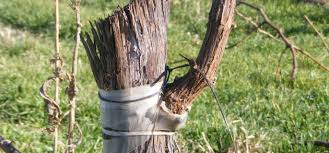 Unfortunately, Phylloxera was introduced into the vineyards when American varieties were imported which resulted in mass destruction. Those American varieties that evolved in the presence of phylloxera became tolerant to the insects feeding allowing them to become “immune” to their damage. While many native varieties can be grown successfully on their own roots, V. vinifera and many hybrid varieties need to be grafted. Grafted rootstocks can also be used to combat other soil borne pests such as nematodes, be more tolerant of drought, pH and salinity levels in soils along with poorly drained soils. The rootstock also affects vine growth, yield, fruit quality, and ultimately wine quality.
Unfortunately, Phylloxera was introduced into the vineyards when American varieties were imported which resulted in mass destruction. Those American varieties that evolved in the presence of phylloxera became tolerant to the insects feeding allowing them to become “immune” to their damage. While many native varieties can be grown successfully on their own roots, V. vinifera and many hybrid varieties need to be grafted. Grafted rootstocks can also be used to combat other soil borne pests such as nematodes, be more tolerant of drought, pH and salinity levels in soils along with poorly drained soils. The rootstock also affects vine growth, yield, fruit quality, and ultimately wine quality.
Site Selection
Above all else, vineyard site selection is probably the most important decision a grape grower can make. Since it takes several years for a vine to develop into an established vineyard that produces fruit, a poor decision where to plant could be a major financial disaster. Most grapevines can grow in a variety of places, but different varieties definitely strive in different climates, heat summations, seasonal variations, longer term cycles and fluctuations, and weather hazards.
The Balancing Act
In order to get the best fruit it is imperative that the vine stays in balance. Just as we all need to eat a properly balanced diet, the grapevine needs to remain in balance. The vine needs to be able to grow foliage, roots, fruit and establish a trunk. Depending on influences such as soil depth, soil texture, rainfall and seasonality, the grower must adapt irrigation, fertilization and viticulture expectations. If the vine becomes to green, it won’t produce enough fruit and vice versa. In other words, you can overcrop as easily as you can undercrop.
In order to maintain this balance, several important decisions are made by the grower. These include trellising and irrigation decisions for the entire vine. In-row spacing, pruning, shoot thinning, and crop dropping in order to help the balance. Leaf and lateral removal to adjust for the light penetration. One major decision to answer these questions is the choice of trellising systems.
Trellising Choices
This brings me back to my original question to you. When you are in the vineyard and admiring those beautiful clusters, looking for that perfect sunbeam to light those berries, have you ever noticed the differences in the vines? Some vines look like a big, giant head while others are divided. trellis system allows the grapevines to grow to the best of their abilities in the environment they have been planted.
Non-Divided Canopy Systems
| Umbrella Kniffin – Head-Trained Vines
|
Two- or three-wire trellises are used for umbrella kniffin trellis system. A trunk extends to a point 4 to 6 inches (10 to 15 cm) below the top wire. This system utilizes long canes (10 to 20 buds each) that originate from renewal spurs at or near the top of the trunk. | |
High Bilateral Cordon
|
The high bilateral cordon system involves training the cordons along the top wire of the trellis in a manner similar to the low bilateral cordon system. The cordons remain as semi-permanent extensions of the trunk though they may need replacement every five or so years. Generally only two wires are needed for the trellis. The bottom wire serves as a training wire and a hanging wire for the irrigation system. | |
Vertical Shoot Position (VSP)
|
The vertical shoot position (VSP) system (See Figure 8.6), also known as the mid-wire cordon, restricts the fruiting/renewal zone to a small vertical zone along a single trellis wire. VSP is a good canopy management system for low to moderate vigor vines. It is very common in cool-climate viticultural regions of the world where it is used to invigorate shoots and ensure that buds and fruit are adequately exposed to sunlight. If the VSP system is used for high vigor vines, the canopy may be too dense, and leaf removal may be required to improve bunch exposure and reduce disease incidence. |
Divided Canopy Systems
*source Grape Grower’s Handbook A Guide To Viticulture for Wine Production
50 Shades of Grape
As E.L. James wrote, (I swear I googled the quote, I do not have it memorized) “Men aren’t really complicated, Ana, honey. They are very simple, literal creatures. They usually mean what they say. And we spend hours trying to analyze what they’ve said – when really it’s obvious. If I were you, I’d take him literally. That might help.” This same quote can be translated to the grapevine. The vine tells us what it needs. It shows us if it needs more sun, more water, less leaves or even less fruit. All we need to do is listen, well, observe and it becomes rather obvious. All we need to do is get down and dirty in the vineyard.
~Sláinte!

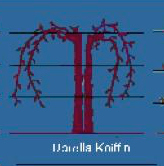
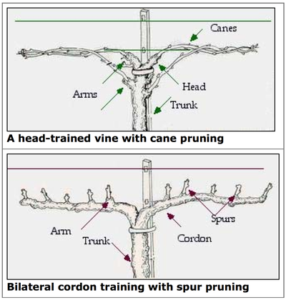
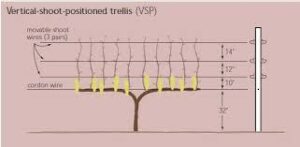
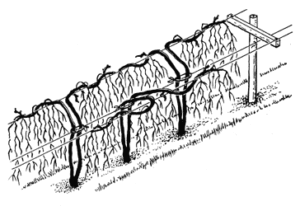

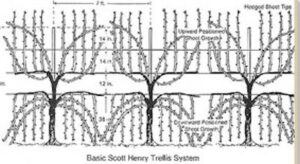
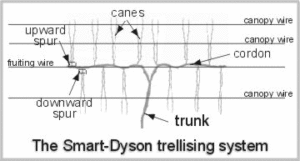
I’m always fascinated by trellises…or the lack of them. This is a great summary with visuals. Thank you!
Thank you Jill!
This was an awesome post. So many people don’t understand canopies and root stock. I loved it! I really liked the playful intro!
Thank you so much Amber! I love being able to talk science and wine!
This is such an informative post! I’m studying for my WSET Diploma and came across this while looking for details on various trellising methods. Very clear and easy to understand – thank you! 🙂
Thank you Noelle. I am glad I could help you study! Best of luck in your studies!!!
Hello, They are many wineries in the world but the proper cleaning is the main point of every winery. In this case, your blog provides such a piece of useful information. I really liked the playful intro!
Thank you very much and yes. … cleaning is of utmost importance.